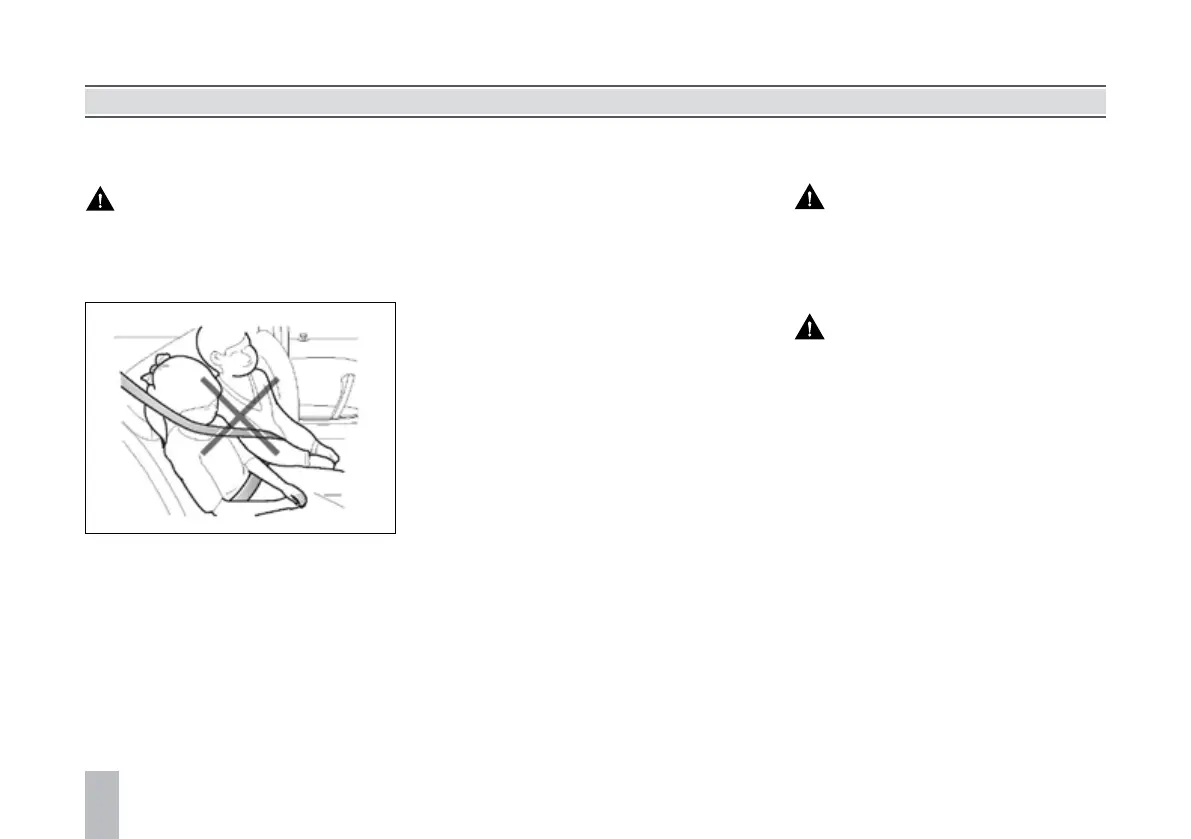62
Older Children
NEVER share a seat belt amongst
children. In the event of an accident
or collision, the children are not
secure. It could cause death or
seriousinjury.
As children grow and become older/larger
it will get to the stage when they no longer
require child seat restraints. At this point they
will require use of the vehicle standard seat
belt. Please ensure the seat belt is correctly
positioned on the body of the child.
When fastening a seat belt for a child always
check it for correct positioning. Adjust the
height of the seat belt to ensure the shoulder
belt is kept away from the child’s face and
neck. Position the lap belt across the hips
as low as possible, and tighten adequately.
Correct positioning means that the seat belts
can pass the applied force to the strongest
part of the child’s body in accidents.
If the shoulder belt is too close to the child’s
face or neck, it may be necessary to use a
child booster cushion (always ensure that it
meets any relevant laws or standards).
Seat Belt Pre-tensioners
The seat belt pre-tensioners will
only be activated once and then
MUST BE REPLACED. Failure to
replace the pre-tensioners will
reducetheefciencyofthevehicle’s
restraint system.
If the pre-tensioners have been
activated, the seat belts will still
function as restraints, and must be
worn in the event that the vehicle
remains in a drivable condition. The
seat belt pre-tensioners should be
replacedattheearliestopportunity
byanMGAuthorisedRepairer.
The vehicle is fitted with seat belt pre-
tensioners. These are designed to retract
the seat belts and work in conjunction with
the airbags in the event of a severe collision.
They are designed to retract the seat belt and
‘secure’ the occupant in the seat.
The airbag warning light on the instrument
pack will alert the driver to any malfunction
of the seat belt pretensioners.(see ‘Warning
Lights and Indicators’ in the ‘Instruments and
Controls’ chapter).
Seats & Restraints

